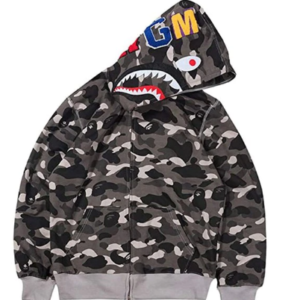Bape Clothing: A Japanese Fashion Icon
Introduction
In the dynamic world of fashion, certain brands manage to transcend borders and become global icons. Bape Clothing, also known as “A Bathing Ape,” is one such brand. Although it has made its mark on fashion scenes around the world, its origin story begins in the vibrant streets of Japan. This article delves into the fascinating history and evolution of bapeclothing, showcasing how it originated in Japan and became a global phenomenon.
The Birth of Bape
Nigo’s Vision
Bape Clothing was founded by the visionary designer and entrepreneur, Nigo, whose real name is Tomoaki Nagao. In 1993, Nigo opened a small shop in the bustling streets of Tokyo’s Harajuku district. Little did he know that this humble beginning would lay the foundation for a fashion empire that would capture the hearts of fashion enthusiasts worldwide.
Streetwear Revolution
At its core, Bape was born out of the streetwear movement, a fashion subculture rooted in urban environments. Nigo’s vision was to create a brand that seamlessly blended elements of hip-hop, skateboarding, and pop culture into unique clothing designs. Bape’s iconic logo, the instantly recognizable ape head, quickly became a symbol of streetwear cool.
The Unique Aesthetic of Bape
Bape Camo
One of the most distinctive features of Bape Clothing is its camouflage patterns, often referred to as “Bape Camo.” Unlike traditional military camouflage, Bape Camo incorporates the brand’s ape mascot into the pattern, creating a playful and unique twist. This aesthetic innovation was a game-changer, setting Bape apart from other streetwear brands.
Attention to Detail
Bape is synonymous with meticulous attention to detail. From the stitching on their hoodies to the quality of their materials, every aspect of Bape Clothing is carefully considered. This commitment to craftsmanship has earned the brand a reputation for producing high-quality, long-lasting garments.
The Global Phenomenon
Bape’s Global Reach
While Bape Clothing originated in Japan, it quickly gained popularity beyond its home turf. The brand’s bold designs and limited edition releases garnered a dedicated fanbase in the United States, Europe, and other parts of the world. Bape’s global expansion was a testament to the universal appeal of its unique style.
Celebrity Endorsements
One of the driving forces behind Bape’s global success has been its celebrity endorsements. Musicians, actors, and athletes embraced the brand, often seen wearing Bape’s signature hoodies, T-shirts, and sneakers. This celebrity endorsement not only elevated Bape’s status but also introduced it to new audiences.
Bape’s Influence on Streetwear
Collaborations and Collectibles
Bape’s collaborations with other brands and artists have been highly anticipated events in the world of fashion. Limited edition releases, featuring iconic characters like Hello Kitty or popular brands like Adidas, have become sought-after collectibles. These collaborations have further solidified Bape’s status as a trendsetter.
Streetwear Legacy
Bape Hoodies has left an indelible mark on streetwear culture. Its unique fusion of street style and high fashion has influenced countless designers and brands. Bape’s legacy can be seen in the bold graphics, vibrant colors, and playful designs that have become hallmarks of streetwear.
Conclusion
Bape Clothing’s journey from the streets of Tokyo to the global fashion stage is a testament to its innovation, creativity, and commitment to unique style. Originating in Japan, Bape has transcended borders, becoming a symbol of streetwear coolness worldwide.
Bape Clothing is not just fashion; it’s a cultural phenomenon. It represents the spirit of individuality, self-expression, and the power of a unique vision.
From its humble beginnings in Harajuku to its collaborations with global icons, Bape’s story is one of success, influence, and a commitment to staying true to its roots.

